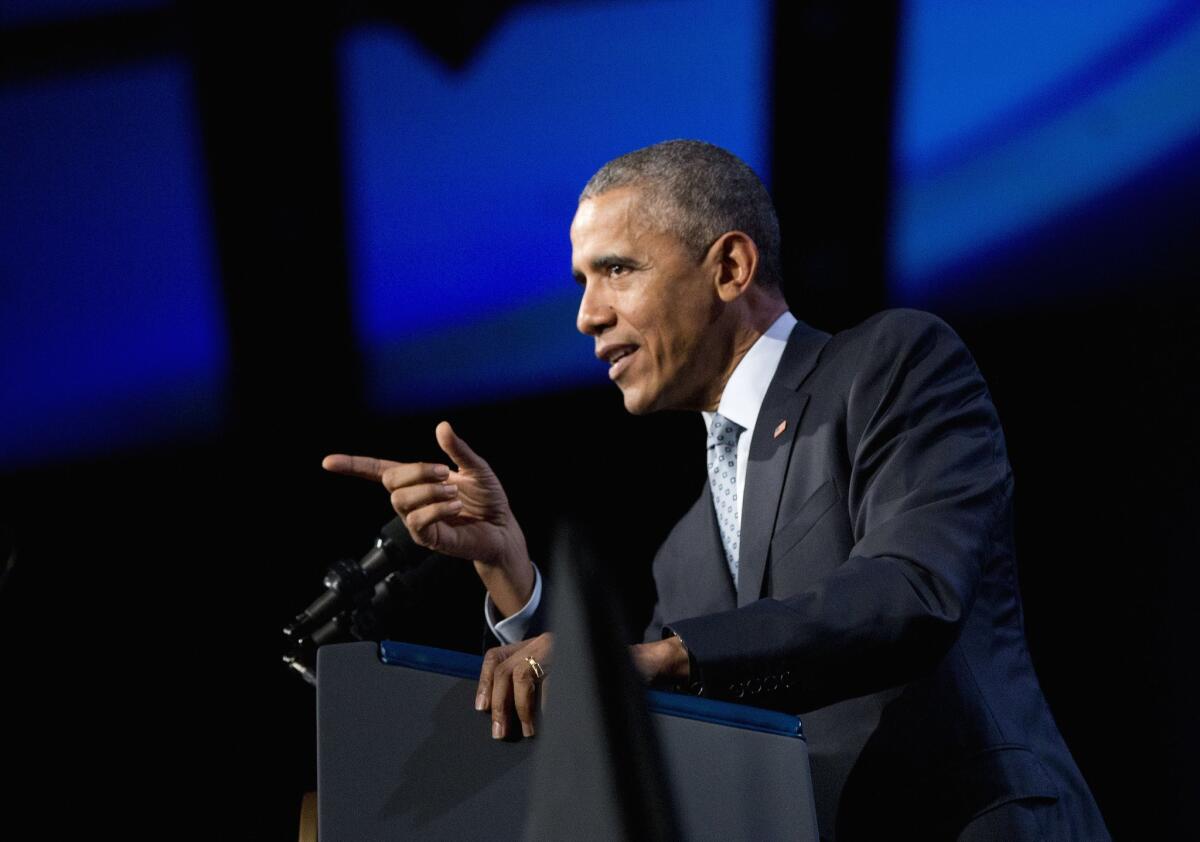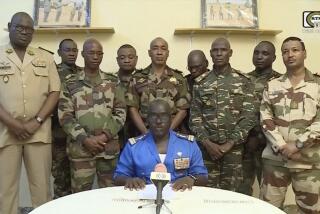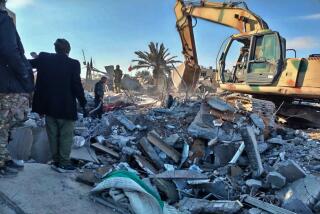Editorial: Diplomacy, not U.S. ‘boots on the ground,’ is still the best option in Syria

Even as President Barack Obama sent U.S. troops back to Iraq and ordered the military to stay in Afghanistan, he insisted Syria would remain off limits for American ground forces. Now the president has crossed his own red line.
Violating the spirit if not the letter of his promise not to put American “boots on the ground” in Syria, President Obama has decided to deploy up to 50 special operations forces in that country to assist Syrians fighting Islamic State. Meanwhile, the U.S. has been taking part in talks with other nations — including Iran, Saudi Arabia, Turkey, Iraq and Russia — to try to advance a political settlement that would end Syria’s civil war and create a “credible, inclusive, non-sectarian governance, followed by a new constitution and elections.” (The first session of the talks in Vienna didn’t include representatives of President Bashar Assad or the Syrian opposition, though they may join later.)
Of the two initiatives, the attempt to pursue a diplomatic solution deserves priority, even if an accord doesn’t lead to the immediate resignation of Assad. Although Obama said in 2011 that “the time has come for President Assad to step aside,” the administration has made it clear more recently that it doesn’t regard his ouster as its paramount objective. Indeed, even before the emergence of Islamic State, the idea of abruptly overthrowing Assad troubled U.S. policymakers because of the precedent of Iraq, where the ouster of Saddam Hussein and the dismantling of political and military institutions contributed to sectarian warfare.
Allowing Assad to remain in power even for a limited time would be a bitter pill.
Allowing Assad to remain in power even for a limited time would be a bitter pill. The civil war is a direct result of his brutal suppression of peaceful protests inspired by the Arab Spring, and there is strong evidence that his forces have used chemical weapons against civilians. He is as responsible as Islamic State for the wave of refugees that has poured out of Syria.
But if a transitional government could be cobbled together that at least some Assad opponents would accept, the resulting decline in violence might make it easier for the U.S. and its allies — and Russia — to focus their attention on Islamic State.
The harder question is whether and how the U.S. can bring pressure on Assad to accept an agreement in which he would have to step down or share power. Those who have argued for more extensive U.S. support for “moderate” anti-Assad forces maintain that only significant military pressure, augmented by a “no-fly zone” enforced by U.S. air power, can bring Assad to the negotiating table. The no-fly zone is often coupled with a proposal for a “safe zone” where Syrian civilians could be protected.
One problem with that proposal is that creation of a no-fly zone could put the U.S. in conflict with Russia, which has installed antiaircraft missiles in Syria to protect its warplanes. As for increasing aid to “moderate” anti-Assad forces, that enterprise has been haunted for years by the difficulty of reliably identifying “moderates.” That issue also has bedeviled U.S. efforts to train and strengthen military forces in Syria opposed to Islamic State. And that isn’t the only problem. There is also ethnic tension between Syrian Kurdish opponents of Islamic State and Arab opposition forces.
Critics who say Obama has been feckless in his Syria policy dismissed the deployment of the special operations troops. Sen. John McCain (R-Ariz.), an advocate of a no-fly zone, complained that “there is still no compelling reason to believe that anything we are currently doing will be sufficient to achieve the president’s stated goal of degrading and ultimately destroying” Islamic State. He accused Obama of “grudging incrementalism.”
Obama’s policy toward Syria has been far from sure-footed. He has sent mixed messages about U.S. intentions and raised unrealistic hope among Assad’s opponents. He and his advisors were caught unaware by Russia’s decision to launch airstrikes in Syria, ostensibly to target Islamic State but actually aimed (according to the U.S.) at other opponents of Assad. His deployment of 50 special operations forces seems more symbolic than substantive, unlike the ongoing U.S. airstrikes, which have taken a toll on Islamic State.
Obama has been rightly hesitant to deploy large numbers of U.S. combat forces in either Syria or Iraq, and he is right to make an end to the violence in Syria a higher priority than the immediate ouster of Assad. It’s hard to be optimistic about events in Syria, but diplomacy seems to offer a better path to peace than boots on the ground or a no-fly zone.
Follow the Opinion section on Twitter @latimesopinion and Facebook
More to Read
A cure for the common opinion
Get thought-provoking perspectives with our weekly newsletter.
You may occasionally receive promotional content from the Los Angeles Times.






